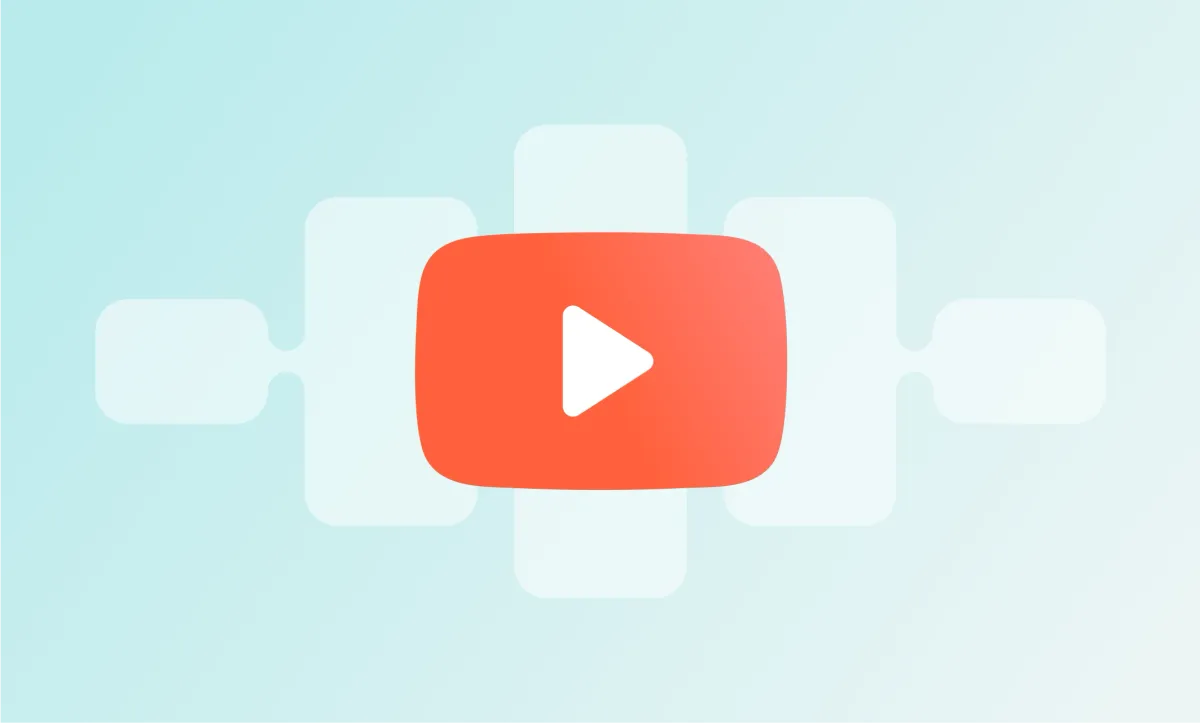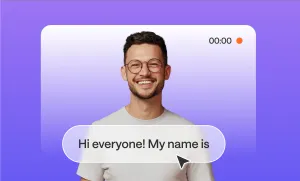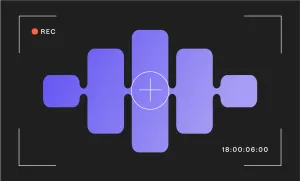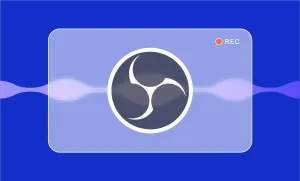Starting a podcast might sound like a leap, but choosing YouTube as your platform is probably one of the smartest moves you could ever make.
Think about the videos you’ve clicked on recently: moments of real conversations, bursts of laughter, stories that linger in your mind long after they end.
But how do you bring your voice into this space? How do you make a podcast that stands out among millions of uploads?
We’re here to break down exactly how to start, step by step, so that you can confidently share your voice and create that same unforgettable experience for your listeners.
Table of Contents
– What is a Podcast on YouTube?
– How to do a Podcast on YouTube
– How to Start a Video Podcast on YouTube
What is a Podcast on Youtube?
A podcast on YouTube is like a mix of regular podcasting and videos you'd find on YouTube. You know how YouTube is all about videos? Well, it turns out you can also use it to share your podcasts.
So, here's the deal: you can upload audio or even video episodes on YouTube, just like you would for regular podcasts. But because YouTube is such a huge platform, it gives you a chance to connect with a bunch of people from all over the place.
Imagine you're into making podcasts about cooking tips. You could create your podcast episodes like you normally would, but then also add some visuals or images to make things more interesting for your viewers on YouTube. That way, you get the best of both worlds: audio content like a podcast and the reach of a big video platform.
How to Do a Podcast on YouTube: 3 Ways
Starting a podcast on YouTube opens up a world of possibilities for reaching new audiences and deepening engagement. But there’s no single way to approach it.
Depending on your goals, you could choose to upload your existing audio podcast, which offers a straightforward way to tap into YouTube’s vast audience. If you’re ready to enhance your show with visuals, starting a video podcast can create a more immersive experience, blending the power of spoken word with engaging imagery. And for those who thrive on real-time interaction and spontaneous content, live-streaming videos offer an unmatched way to connect directly with your audience and build a vibrant community.
Each of these options comes with its own benefits and challenges, fitting various content strategies and audience expectations. Whether you’re looking to repurpose existing content, add a new dimension to your podcasting, or create immediate, real-time dialogue with or among your fans, YouTube can be your playground for creativity and growth.
1) Uploading an Existing Podcast
- Content Repurposing: Uploading an existing podcast involves taking your pre-recorded audio content and converting it into a video format. This approach is efficient for repurposing your podcast episodes for a wider audience.
- Visual Minimalism: Typically, you accompany the audio with a static visual element, such as a podcast logo or a relevant image. This minimalist visual presentation allows viewers to focus on the content itself.
- Time and Resource Efficiency: If you have an extensive library of audio content, this method can save time and resources since you're not creating new episodes from scratch.
- Limited Real-Time Interaction: One limitation is that interaction with the audience is somewhat limited. Viewers can engage through comments and likes, but you miss out on the real-time interaction associated with live content.
2) Starting a Video Podcast
- Dynamic Visual Experience: A video podcast takes your content to the next level by adding visual elements. You can engage your audience with live interactions, facial expressions, body language, and visual aids, enhancing the overall content delivery.
- Flexibility in Content: Video podcasts offer a broader range of content possibilities, including interviews, demonstrations, visual storytelling, and live events. This flexibility allows for more creative expression.
- Real-Time Engagement: One of the standout benefits is real-time engagement. You can interact with your audience through live chat, Q&A sessions, and immediate feedback, creating that much-needed sense of community and connection.
- Production Complexity: While video podcasts provide significant advantages, they require more advanced equipment, a stable internet connection, and the ability to handle technical challenges in real-time. The production process can be more complex compared to uploading existing podcasts.
- Viewer Commitment: Live video podcasts often require viewers to commit to a specific schedule or timing, as they expect real-time participation. This can be both an advantage and a challenge, depending on your audience's preferences.
3) Creating Live Streaming Videos
- Real-Time Connection: Live streaming videos are entirely live and provide a direct, real-time connection with your audience. Viewers can ask questions, comment, and engage with you immediately.
- Event Experience: Live streaming is like hosting an event where you can showcase product launches, conduct Q&A sessions, share breaking news, or simply connect with your audience in a spontaneous and authentic way.
- Content Variability: The content options for live streaming are diverse, ranging from gaming sessions to educational webinars and live performances. This flexibility allows you to tailor content to your audience's interests.
- Technical Demands: If you’re not sure how to start a live podcast on YouTube, you’re not alone. Usually, professional live streaming gets a bit confusing as it requires more technical preparation, including a stable internet connection, streaming software, and often, more robust equipment. There is always a change that technical hiccups will occur during live broadcasts.
In this article, our primary focus will be on the most common approach: transitioning from an audio podcast to a video podcast by re-recording your existing audio content in a visual format.
We choose to emphasize this approach because it allows podcasters to leverage their existing audio content while tapping into the visual appeal and broader audience reach offered by YouTube.
How to Start a Video Podcast on YouTube
The three main steps for starting a video podcast on YouTube are:
- Planning your podcast
- Producing your podcast
- Uploading your podcast to YouTube
Step 1: Planning Your Podcast
Starting a podcast on YouTube begins with careful planning. Whether you're a seasoned podcaster or a newcomer to the world of content creation, laying a solid foundation is crucial for your podcast's success on this platform.
1) Identifying Your Niche and Target Audience
Before you hit the record button, take the time to identify your niche and target audience. Your niche is your specific area of expertise or interest, and it's what will set your podcast apart from the competition. Consider your passion, knowledge, and what you genuinely enjoy talking about. Remember, passion can be contagious, and it will keep you motivated in the long run.
Once you've pinpointed your niche, define your target audience. Who are you creating content for? What are their interests, problems, and preferences? Understanding your audience helps you tailor your content to their needs, making it more appealing and relatable.
2) Choosing a Podcast Format
The next step is choosing the right podcast format. Your format will determine the structure and style of your episodes. Some common podcast formats include:
- Solo Podcast: You host the show alone, sharing your thoughts, expertise, and experiences.
- Interview Podcast: You invite guests to discuss relevant topics or share their expertise. This format can attract a wider audience and introduce fresh perspectives.
- Co-hosted Podcast: You partner with someone else to co-host the show, providing dynamic and engaging conversations.
- Panel Discussion: A group of experts or enthusiasts discusses a particular topic, offering diverse opinions and insights.
- Narrative Podcast: You tell a story or explore a theme through scripted content and storytelling techniques.
Selecting the right format depends on your niche, audience, and your personal strengths as a host. Consider what will best showcase your content and engage your viewers.
3) Selecting a Podcast Name and Branding
Your podcast's name and branding are your first impression on potential listeners. Choose a name that reflects your niche, is easy to remember, and is unique enough to stand out in search results. Keep in mind that your podcast name will also be the title of your YouTube videos.
4) Defining Your Podcast's Unique Selling Proposition (USP)
Your USP is what makes your podcast special and gives people a reason to tune in. It could be your expertise, your storytelling skills, your charismatic personality, or a unique angle on your niche.
Consider what sets you apart from other content creators in your niche and how you can leverage this uniqueness to attract and retain your audience. Your USP should be evident in your branding, content, and how you present yourself on YouTube.
Step 2: Producing your podcast
When it comes to creating a podcast on YouTube that captivates your audience, having the right equipment and software is essential. In this section, we'll delve into the key components you need to ensure your podcast sounds and looks professional.
1) Choosing the Right Podcast Equipment
- Microphones: A quality microphone is the heart of your podcast's audio production. Invest in a microphone that suits your budget and needs. USB microphones are a popular choice for beginners because they are easy to set up and offer good audio quality. For more advanced users, XLR microphones connected to an audio interface provide even better sound quality and customization options.
- Headphones: To monitor and fine-tune your audio recordings, a pair of closed-back headphones is crucial. These headphones help you catch any background noise, audio glitches, or inconsistencies during recording and editing. Look for headphones with a flat frequency response for accurate audio representation.
- Audio Interface: If you're using an XLR microphone, you'll need an audio interface to connect it to your computer. Audio interfaces convert analog audio signals from your microphone into digital data that your computer can understand. Choose an interface with the necessary inputs and outputs for your setup.
2) Picking the Recording and Editing Software
Once you have the right hardware in place, you'll need software to record and edit your podcast episodes. Several software options are available, catering to different skill levels and preferences.
For those seeking an efficient tool to elevate their video podcast production quality, Podcastle offers a range of features to consider, aiming to streamline the process of creating engaging video podcasts for platforms like YouTube.
Some of the best features of Podcastle include:
– 4K video recording quality
– Multitrack remote interview recording
– Intuitive and user-friendly audio editing dashboard
– AI-powered audio enhancement tools
The best part about Podcastle is that it is extremely beginner-friendly, yet it is packed with professional tools to help you level up your podcasting game.
Step 3: Uploading your podcast to YouTube
Once you've recorded and polished your podcast episodes, it's time to share your content with the world on YouTube. This section will guide you through the steps of uploading your podcast episodes effectively to ensure maximum visibility and engagement.
1) Creating a YouTube Channel (if you don't have one)
If you don't already have a YouTube channel, the first step is to create one. It's a straightforward process; simply sign in with your Google account, click on your profile picture, and select "Your Channel." Follow the prompts to set up your channel, including choosing a profile picture and adding a channel description. Having a dedicated channel for your podcast makes it easy for viewers to find and subscribe to your content.
2) Uploading Podcast Episodes
With your YouTube channel ready, you can start uploading your podcast episodes. Click on the "Create" button in the top right corner of your YouTube homepage and select "Upload Video." From there, you can select the video file (which will be your podcast episode) from your computer. YouTube will guide you through the process, allowing you to add titles, descriptions, tags, and other important details.
3) Optimizing Video Titles, Descriptions, and Tags
Optimization is key to making your podcast episodes discoverable on YouTube. Craft compelling and keyword-rich titles that accurately represent the content of your episode. In the description, provide a brief summary of the episode, include relevant keywords, and add links to your podcast's website or social media. Use relevant tags to help YouTube understand the content of your video. This optimization will enhance your podcast’s visibility in search results and recommendations.
4) Creating Eye-Catching Thumbnails
Your video thumbnail is the first thing viewers see when browsing YouTube. Create eye-catching thumbnails that are visually appealing and represent the episode's content. Use high-resolution images, clear text, and vibrant colors to grab viewers' attention. Thumbnails that pique curiosity or convey the essence of your podcast can significantly boost click-through rates.
5) Scheduling Regular Release Times
Consistency is key to building an audience on YouTube. Choose a regular schedule for releasing your podcast episodes, whether it's weekly, bi-weekly, or monthly. Viewers are more likely to subscribe and return for new content when they know when to expect it. You can use YouTube's scheduling feature to set the exact date and time for your episode releases.
Final Thoughts
As you explore YouTube podcasting, keep in mind that you can get as creative as you want. Combining audio and video opens up lots of ways to tell your story. So, what kind of story you will share, and how you will engage your viewers on this exciting platform is entirely up to you.
Need more advice on how to shape the best YouTube videos? Take a look at some of the most common mistakes and how to avoid them:








